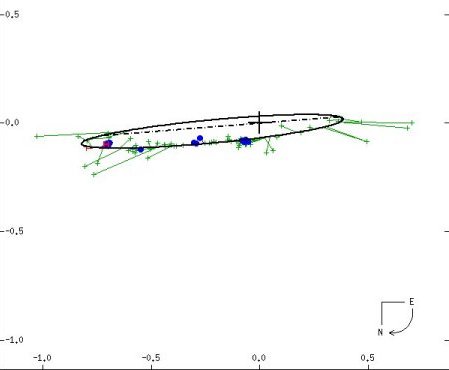
 |
Gamma Lupi B, the fainter of the two blue stars, orbits Gamma Lupi A, which is set at the cross, taking 190 years to go around at an average separation of 85 Astronomical Units. In reality, each star mutually orbits a common center of mass that lies roughly a third of the way from A to B. The tick marks on the axes are only 0.5 seconds of arc apart, showing how close the stars are to each other. Though the orbit is nearly edge-on, tilted by a mere 5 degrees to the line of sight, the stars still significantly miss eclipsing each other. (W. I. Hartkopf and B. D. Mason, Sixth Catalog of Orbits of Visual Binary Stars, US Naval Observatory Double Star Catalog, 2006.) |